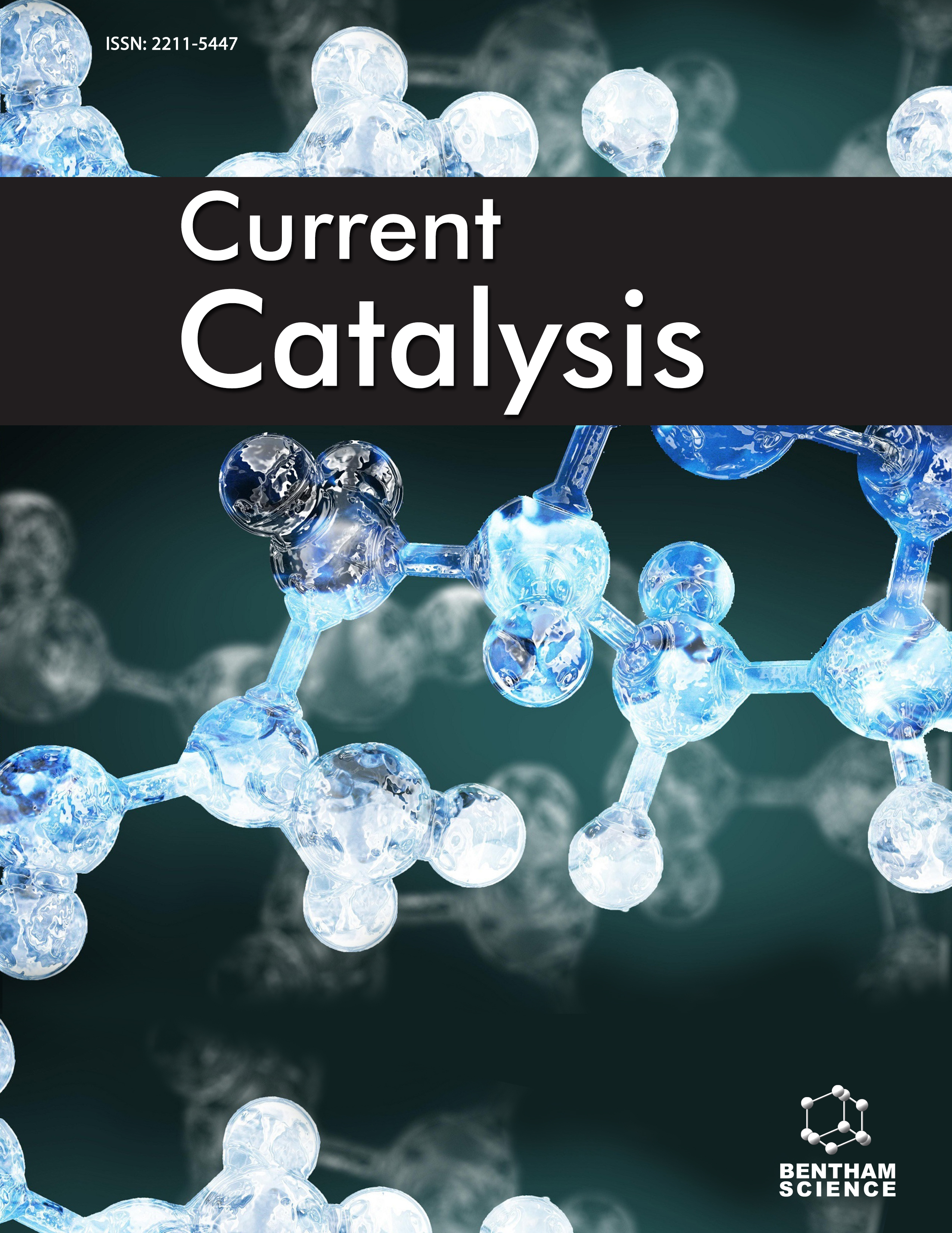- Home
- A-Z Publications
- Current Catalysis
- Issue Home
Current Catalysis - Current Issue
Volume 13, Issue 2, 2024
-
-
Production of Valuable Methanol from Hazardous Methane: Advances in the Catalysis
More LessAuthors: Sayanti Datta and Dipravath Kumar SethBeing a greenhouse gas, methane is a threat to biodiversity. Hence, the utilization of methane by converting it into a valuable chemical like methanol is one of the most promising reactions. To solve that problem, a large number of studies have been performed on methane-to-methanol conversion (MTM process). Still, to date, the production of methanol from methane on an industry scale is a crucial challenge. After a th Read More
-
-
-
Overview of Baker's Yeast as a Biocatalyst
More LessAuthors: Satish Sureshrao Kankarne and Nirmala Vikram ShindeBiocatalysis is an approach to green chemistry. A crucial step in the synthesis of organic compounds is the reduction of aldehydes and ketones to secondary alcohols. The use of a biocatalyst, such as enzymes or entire cells, has not affected this process. It offers great selectivity, high specificity, and an environmentally friendly approach to synthesis. Dried baker's yeast mediates the conversion of optically active alcoho Read More
-
-
-
Recent Advances in Zinc Oxide Nanoparticles: Synthesis Methods, Characterization Techniques, and Emerging Applications
More LessAuthors: Sachin Bhosale, Nikita Kannor, Nirmala Shinde and Nikita SahaneZinc oxide (ZnO) is an inorganic compound with unique physicochemical characteristics that make it versatile and suitable for various applications, especially in the form of nanoparticles (NPs). ZnO nanoparticles (ZnO NPs) exhibit distinct properties and are produced through diverse techniques, making them valuable for applications ranging from consumer goods to medical and catalytic uses. The increasing popularity of ZnO NP Read More
-
-
-
Some New Aspects of Gold-catalyzed Benzannulation Reaction
More LessIntroductionThe gold-catalyzed benzannulation reaction of oxo-alkynes with alkenes or alkynes is one of the important and unique reactions in gold-catalyzed organic transformations.MethodsIn this manuscript, many facets of this reaction have been discussed concerning reactivity and selectivity, along with a new self-benzannulation process. The scope of this chemistry was extended to construct a phenanthrene moiety Read More
-
-
-
Synthesis of Bis-pyrazole Derivatives Using Coal Fly Ash @CuO Core-shell Nanocomposite and their Molecular Docking against Human Tyrosyl DNA Phosphodiesterase I
More LessBackgroundFor catalyzing carbon-carbon and carbon-heteroatom bond formation reactions, core-shell nanocomposites have attracted particular attention as invincible heterogeneous catalysts. Heterocyclic motifs like pyrazole have been used in anticancer drugs. Moreover, DNA repair enzymes are also an efficient target for developing potential anticancer therapies.MethodsNovel core-shell nanocomposite coal fly ash Read More
-
-
-
Synthesis of Various Spiro-pyranooxoindoles Using Vitamin B12 as an Efficient Biocatalyst
More LessAuthors: Reyhaneh Nadernia, Ghasem Marandi, Nourallah Hazeri and Malek Taher MaghsoodlouIntroductionThe present study aims to discuss the synthesis of various spiro-pyrano-oxoindole derivatives through a reaction involving isatin, malononitrile, and a CH-acid source in the presence of vitamin B12.Materials and MethodsEco-friendly solvents were utilized to synthesize the spiro-pyrano-oxoindole, resulting in high yields of all synthesized heterocyclic systems. Isatin and malononitrile were reacted with β-dicarbonyl Read More
-
-
-
Hydroxylation of Phenol by an Azomethine Quinoxaline Schiff Base Copper (II) Complex
More LessIntroductionA binuclear azomethine quinoxaline Schiff base copper (II) complex, [Cu2LCl2], having square-planar environment around each copper (II), has been synthesized.MethodsThe coordination of the azomethine quinoxaline Schiff base with copper (II) and its structure was studied by various physicochemical and spectroscopic measurements.ResultsCatalytic activity of this complex in phenol hydroxylation reaction has Read More
-
-
-
Hydrogenation of Benzene and Toluene by a Ruthenium(II) Quinoxaline Schiff Base Complex as Catalyst
More LessIntroductionA four-coordinate ruthenium(II) quinoxaline Schiff base complex with formula [Ru2LCl2].H2O has been synthesized and characterized. The hydrogenation of benzene and toluene using this complex as a catalyst was studied in a semi-batch reactor.MethodsAt 60℃ with 2.82 × 10-6 mol catalyst and 30 bar hydrogen pressure, turnover frequencies 7362 h-1 and 5873 h-1 have been found for the reduction of benzene Read More
-
Most Read This Month Most Read RSS feed
Article
content/journals/ccat
Journal
10
5
false
en


